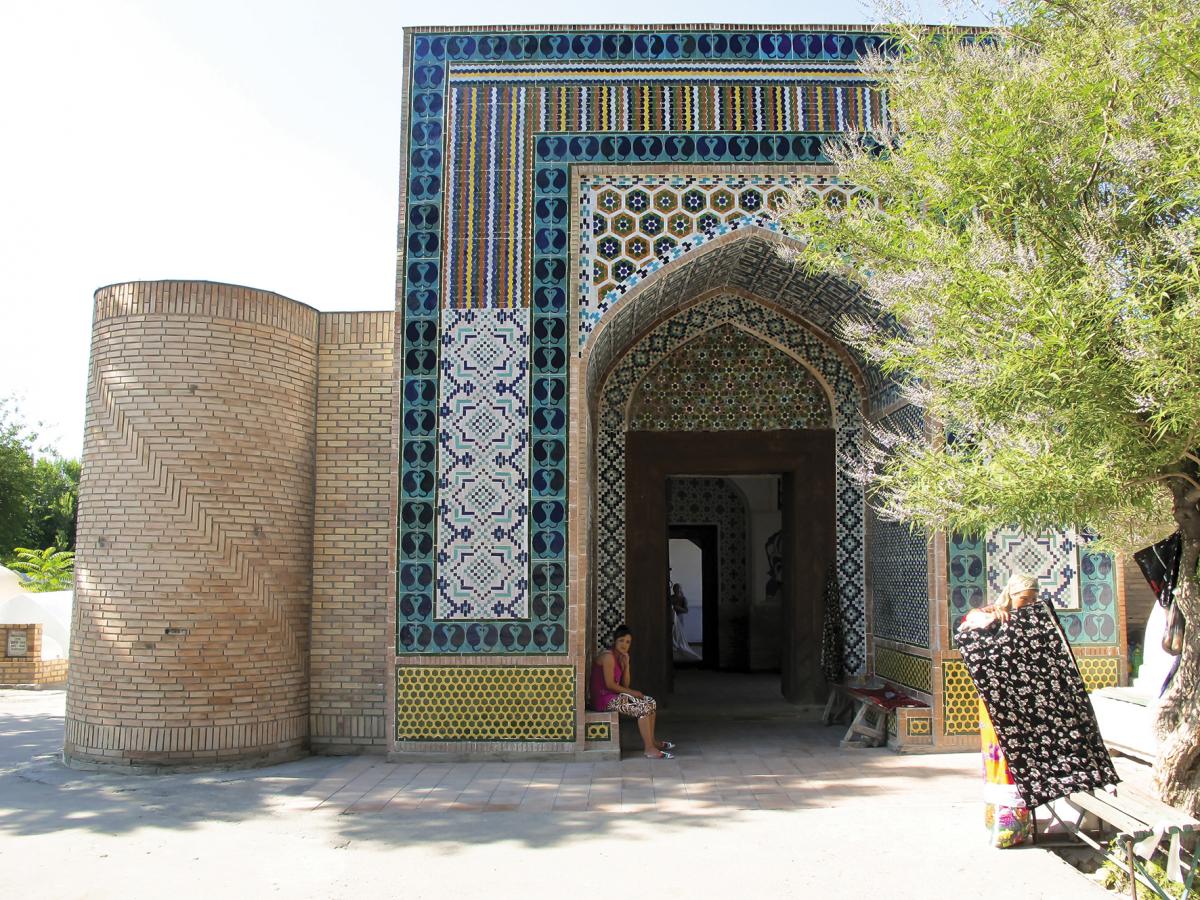Khukandi-i-Latif - Fascinating Kokand
Like every big oriental city, Kokand, besides its own name, also had several titles - The Abode of the Poets, The Enchanting City, The Pleasant City and more.
By one version, Kokand got its name because of hospitality and affability of its residents. The Arabian geographers and travelers called the place “khavokin”, what could be translated as “pleasant”.
Kokand is located in a very beautiful valley, and its view gladdens the eye. The city life is free from haste and fussiness there; the streets, luminous with sunlight, are straight, clean and green. The distance between Tashkent and Kokand is 228 km, in other words, it is a four-hour journey by car via the Kamchik mountain pass.

formed the city of Kokand.
Between 1709 and 1876, Kokand was the capital of the large and powerful Khanate of Kokand. It then existed within the territory of modern Kyrgyzstan, eastern Uzbekistan and Tajikistan, and southeastern Kazakhstan. According to Armin Vambery, a Hungarian traveller of the 19th century, the territory of Kokand was 6 times larger than Khiva, 4 times larger than Teheran and twice as large as Bukhara.
The history of the Khanate of Kokand knows 29 rulers, but Muhammad Khudayar Khan, the last Khan of Kokand, has placed himself on record. He lost and regained his power four times during his life.
Khan Norbutabiy (he remained in power in 1770-1800) left fond memories of himself. During almost 30 years of his reign, there was no popular revolt in the Khanate of Kokand. The economy was healthy and inflation-free. Circulation of “poul”, the smallest coin in the history of Khanate, abundantly evidenced the fact.
Speaking about Kokand, we cannot but mention Muhammad Umar Khan (1809-1822), Norbutabiy’s son, and his wife Nodira Beghim, a famous oriental poetess. In the days of Umar Khan, Kokand turned into a unique centre of culture. The best poets, artists and calligraphers appeared at court, including such famous poets of the time as Zavki and Fazli, Uvaisi.
Assuming the Original Look
Kokand is now anticipating the celebration of its 2000th anniversary. Architectural monuments, theatres and museums are under restoration; new gardens appear here and there.
One of the most famous places here is Kokand Urda - the palace of Khudayar Khan. It was the fruit of many years’ work of hundreds of builders and craftsmen. Upon completion, it was to have eclipsed the fame of the Ark of Bukhara. Khudayar Khan spared neither strength nor resources to attain his goal, although the country was combusted with great troubles, and his own position was rather shaky. When the citadel was erected, it became the object of admiration of everybody who had ever seen the place.
The technology applied during the palace construction was indeed groundbreaking: the column structure was replaced by the beam one. The ceiling was covered with painted wallpaper (papermaking had been domiciled at Kokand for a long time). A standard paper sheet was 1 sq meter in size. It was painted and gilded with sophisticated designs and then a painter stuck it on the ceiling. Today, the artists have restored those patterns and reproduced them on the modern paper.
The palace woodcarving is a truly breathtaking thing. Fretted pillars and doors, whose lace-like upper parts easily transmit sunlight inside the premises, are praiseworthy. But the carved vassa plates are the Kokandians’ pride and joy. The plates’ “mission” is to decorate the ceiling. In the other parts of Uzbekistan such plates used to be painted or patterned. As to the craftsmen of Kokand, they preferred to carve intricate ornaments on the vassas. When it came to restoration of the ceiling, the woodcarvers took a decision to bring back its original look. By some miracle, one fretted plate survived and helped to restore the whole ceiling. Shamsuddin Umarov, of a family of woodcarvers, accomplished his job with credit.
 ENG
ENG  РУС
РУС
 O'Z
O'Z